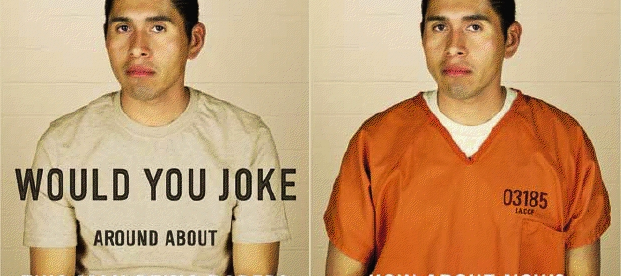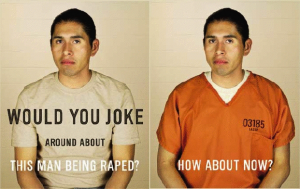Pornography and Prison Rape

The Bureau of Justice Statistics released a report in 2007 finding that 4.5% (or 60,500) of more than 1.3 million inmates had been subjected to sexual abuse in the previous year alone—and many organizations believe the report greatly underestimates the reality. Prisoner victims of sexual abuse are often repeatedly abused over long periods of time, unable to escape their perpetrators. Inmates who are gay, transgender, young, mentally ill, or incarcerated for the first time (“fish”) are particularly vulnerable. The perpetrators often treat their victims like property, “selling” them to other inmates within the facility. Just Detention International advocates, working to stop sexual violence in prisons, treat it as an epidemic which shows “a serious, systemic failure to protect the basic human rights of inmates.”
T.J. Parsell, an activist committed to ending prison rape, wrote a powerful memoir detailing his own horrifying experience as a 17-year-old boy helplessly trying to survive repeated sexual assault during his four-year incarceration. His prison time began with a gang rape that landed him in the hospital ward, and throughout the book, he candidly details what it was like to always be the “property” of other inmates for his own protection.
For the past few decades, sex researchers have stressed a link between viewing porn and sexual violence toward women. But now, researchers argue that masturbation may actually have the power to displace the perpetrator’s urge to rape.
If pornography facilitates masturbation, does allowing pornography have the potential to deter sex crimes in prisons? The 10th Circuit doesn’t think so, at least according to its recent opinion in Sperry v. Werholtz. Kansas inmate Jeffrey Sperry challenged his state’s ban on access to sexually explicit material in prisons, contending it violated his First Amendment rights. The 10th Circuit ultimately agreed that the Kansas regulation was neutral and “rationally related to” its penal objective of maintaining security in prisons.
But is the ban on pornography really necessary to meet security concerns? If it were, does Kansas have safer prisons than other states that do not ban prisoner access sexually explicit material?
And what if some of these researchers are right in their prediction that access to pornography would actually make prison life safer for inmates vulnerable to sexual exploitation? As prison rape has become more and more pervasive in recent decades, the question—as uncomfortable as it may be—begs our attention.


Actually, the research I’ve read states that using porn is like throwing gasoline on a fire. If pornography is used to “spark” a marriage, what do you think it does to prisoners???